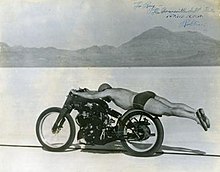I sold my last Sabre with only 65k miles on it because it was getting hard to find parts. As a general rule, the bike dealers in my area won't work on bikes that are this old.
The Sabre is a pretty decent motorcycle for its era. A 49 state model is better than the CA hose monster. It is much stronger than the FJR at low RPMs, has an EPA related power dip 4k-5k rpm and then another good power hit beginning at 6k rpm. My various 49 state Sabres ran 11.2 seconds @ 118 mph, my CA Sabre ran 11.8 @ 112 and my Gen I FJR runs 11.2 @ 121 mph.
The ride is pretty good but the seat needs help. I found the seating position to be good. Brakes are good. If the suspension is set up properly it handles as good as what you would need for almost all normal street riding. The rear mono-shock can get tired but the intrepid people at the Sab/Mag web site have found a way to replace the fluid. I ran my rear shock with approximately 45 pounds of air pressure. The front forks will accept air up to 6 pounds; don't add air from anything but a bicycle pump or basketball pump or you will instantly blow the fork seals. Every time I added more than 2-3 pounds of air the fork seals blew so I just forwent the air and it handled just fine. A quality aftermarket fork brace really helps. The OEM brace is a combination brace and air director for the radiator. Inspect the four screw holes for cracking, this a very common issue. I've broken several OEM for braces and you will know immediately when it breaks because the handling gets noticeably worse.
After mid '84 the cam oiling wasn't a problem. The V65 engine is noisy and the valves tick even when they are properly adjusted, if it ain't a tickin' it needs an adjustment ASAP. For a while Honda made a tool to help with the valve adjustments but later discovered that it contributed to making the valve adjustments too tight when the tool was removed from under the cams. Even though the rear valve cover is split in two pieces it is a real pain in the *** to get out, and then going back in there are twice as many seams to leak oil. You will need two feeler gauge sets to check the valve adjustments, you must have a gauge inserted in each of the valve gaps because they use a single follower with two valve actuators.
Check the side covers that have the V65 logo, each cover has three plastic pins that go into three rubber grommeted holes. The pins regularly snap off and the grommets go -- someplace into the unknown, causing the side covers to blow off.
The fuse panel is under the headlight and can be a source of great anguish as the fuse clips break from fatigue. The main fuse is down by the battery and is a silly foil thingy, almost everyone will replace this fuse with a modern bladed fuse holder. This fuse can physically beak but the break is not visible, and has caused many an owner a lot of troubleshooting time. While down by the battery, note that every Sabre made has absolutely burned up the stator connector. If the stator still has the stock connector please replace it as soon as possible.
Putting on quality modern radial tires transforms the Sabre from pretty good to very good for both handling and ride.
Check the rubber boots that connect the carbs to the intakes. This will best be done with WD40 being sprayed on the boots while the engine is running. This is a VERY common problem as the boots get very hot and tend to crack and split.
I know that this all sounds very negative, but what I wrote is just about the problem areas you may find on an older motorcycle. When the Sabre is cared for, it is a very good motorcycle. I hated to see my last one go but it just wasn't getting enough use once I got my FJR. I sold my Sabre to a neighbor, he loves it and rides it as much as we used to.

































































